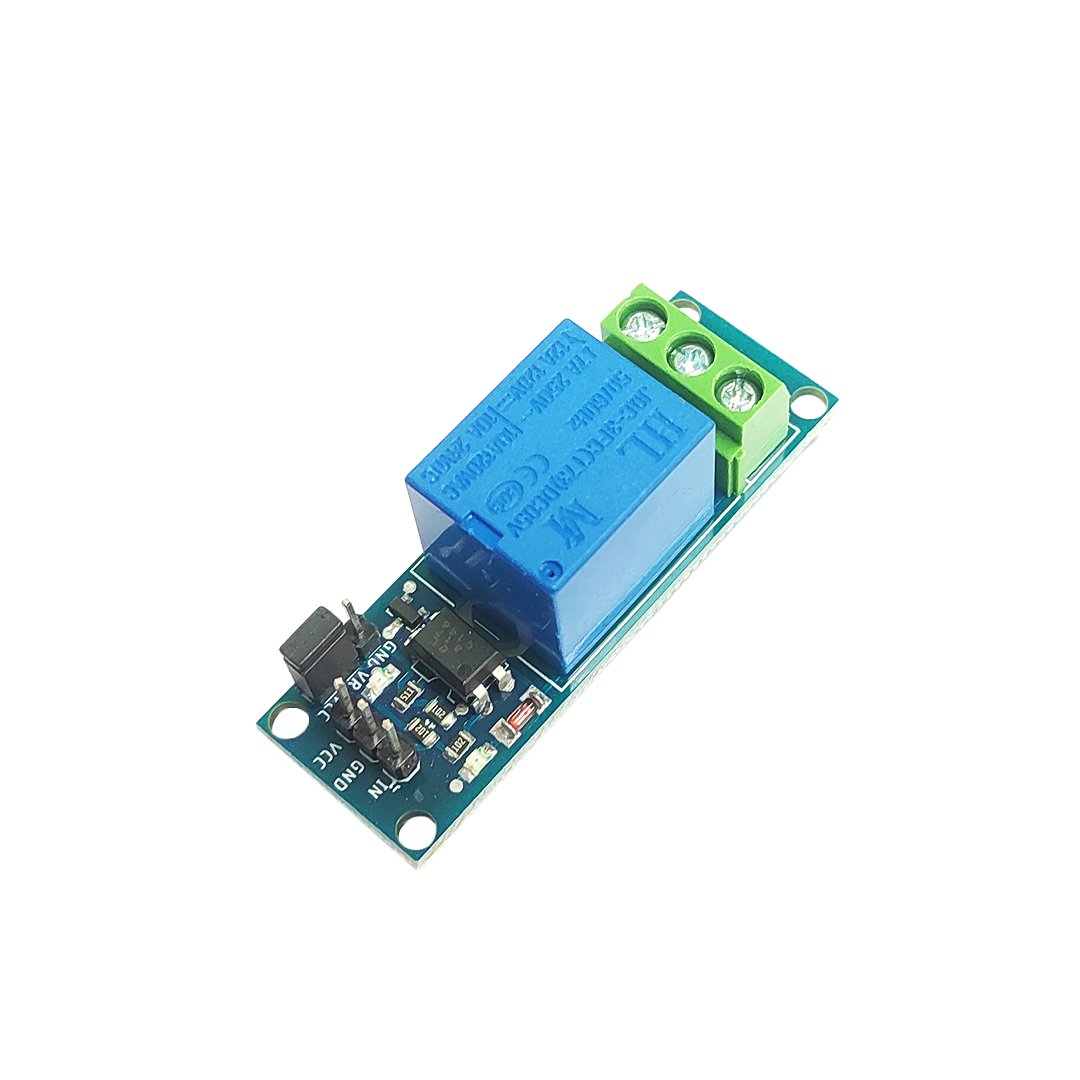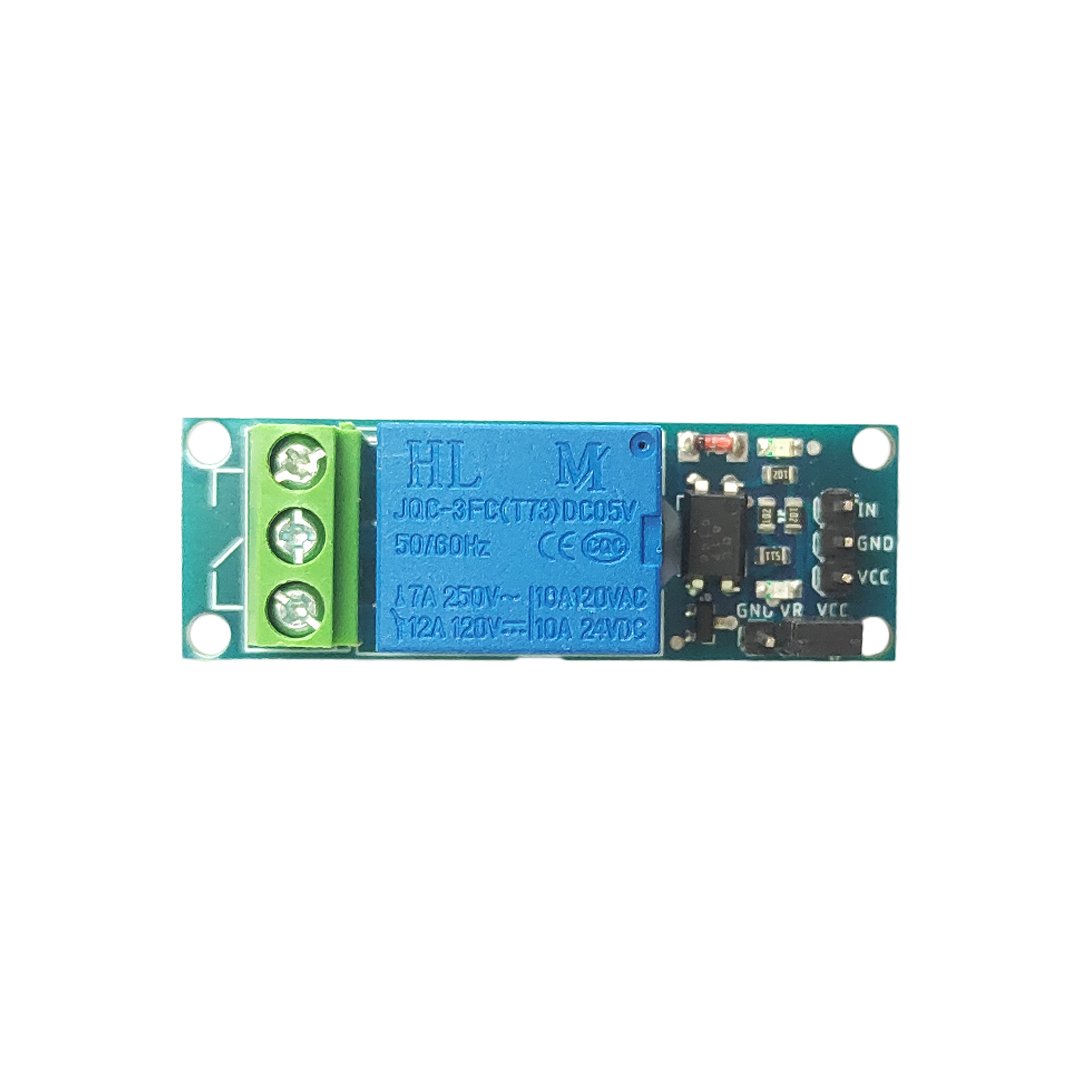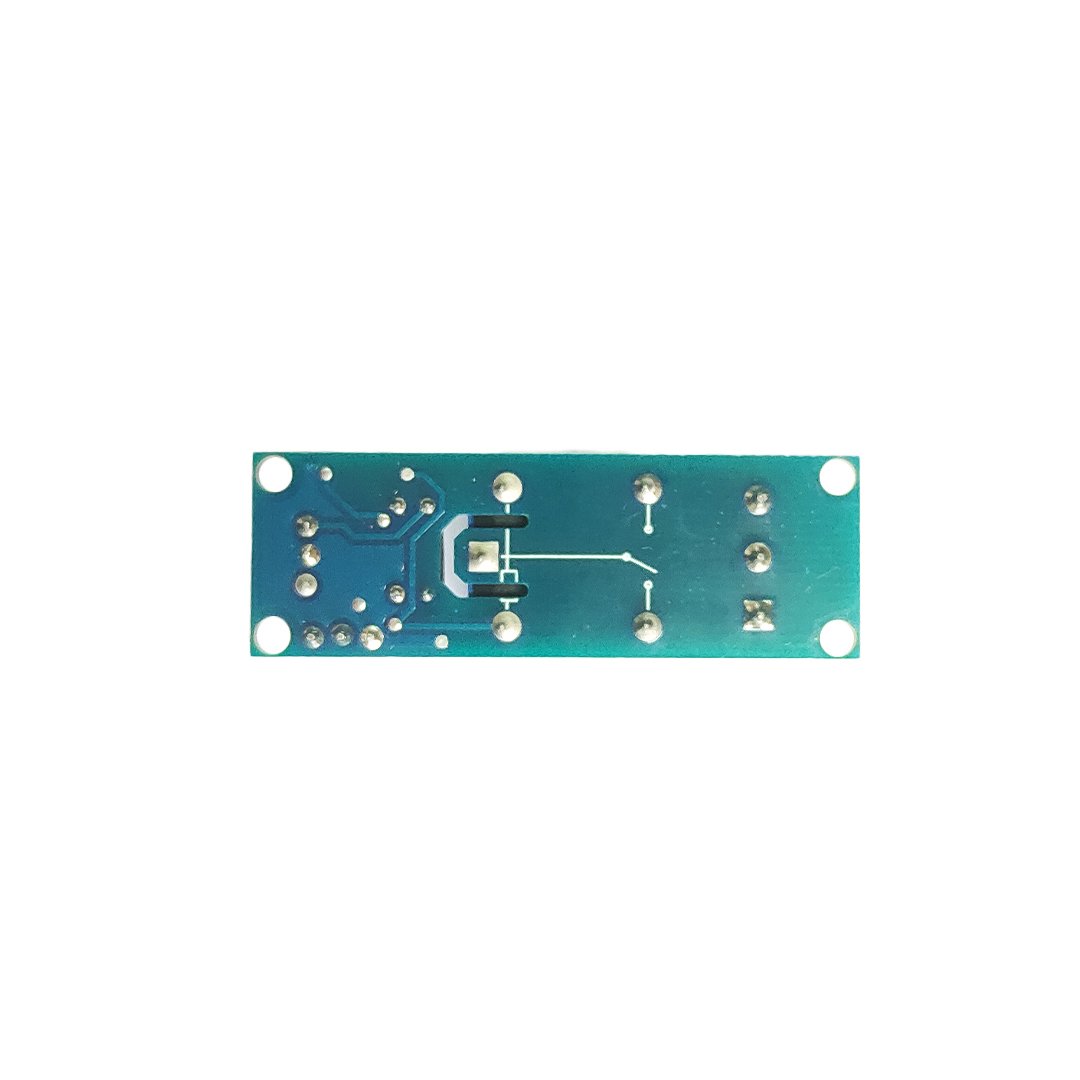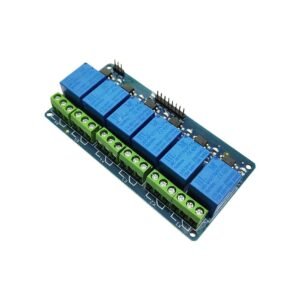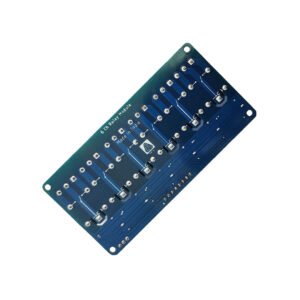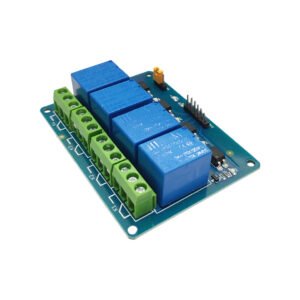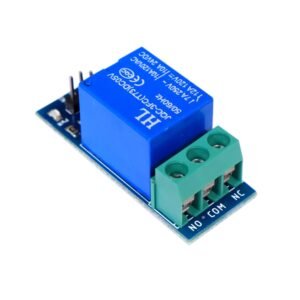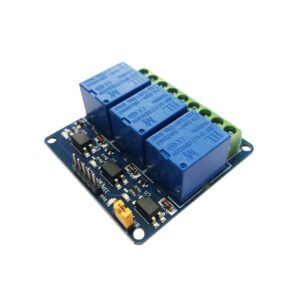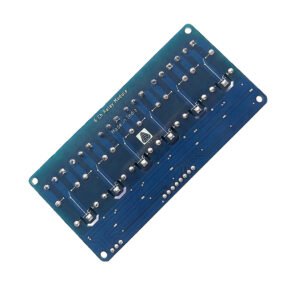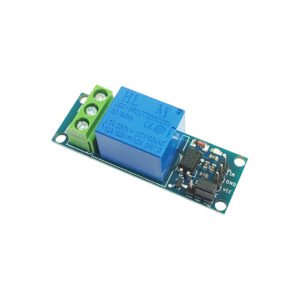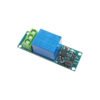

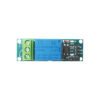

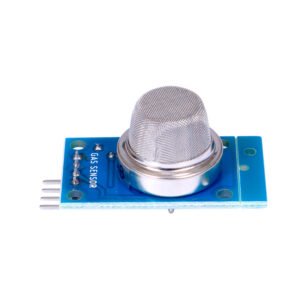

Relay Module 5V 1 Channel with Optocoupler
₹100.00 Original price was: ₹100.00.₹64.00Current price is: ₹64.00. (Including GST)
5 V Relay Module with 1 Channel is designed for switching only a single high-powered device from your Arduino. This 1 channel 5V 10A relay control board module with optocoupler modules is compliant with international safety standards, control, and load areas isolation trenches it has a single relay genuine. The inputs of 1 Channel 5V 10A Relay Module are isolated to protect any delicate control circuitry. Power input and relay control signals are brought to header pins on the board. It can be used as a single chip module for appliance control and work with both DC and AC signals where you can control the 220V AC load.
Specifications: Relay Module 5V 1 Channel
- Channel – 1
- Trigger Voltage (VDC) – 5
- Switching Voltage (VAC) – 250@10A
- Switching Voltage (VDC) – 30@10A
- Dimensions: Length×Width×Height = 18×53×16 (mm)
Description
5V Relay Module with Optocoupler is designed for switching only a single high-powered device from your Arduino. It has a relay rated up to 10A per channel at 250VAC or 30VDC. There are two LEDs on the relay module indicating the position of the relay. We have three channels of the relay broken out to screw pin terminals.
The channels are labeled for their function: common (COM), normally closed (NC), and normally open (NO). On the other side of the module, there are three pins – a Ground pin and a VCC pin to power the module, and an input pin IN to control the relay. The input pin is active low, meaning the relay will be activated when you pull the pin LOW, and it will become inactive when you pull the pin HIGH.
Features: 5V Relay Module 1 Channel
- 1 channel relay module.
- One normally closed contact and one normally open contact.
- High impedance controller pin.
- Default High-level trigger.
- Pull-down circuit for the avoidance of malfunction.
- Power supply indicator lamp.
- Can be controlled various appliances & other Equipment with Large current.
- Standard TTL Level logic controlled.
- The module is compliant with international safety standards.
- With 4 fixed screw holes, hole diameter- 3.1mm, convenient installation, and fixation.
Specifications: Relay Module 5V 1 Channel
- Channel – 1
- Trigger Voltage (VDC) – 5
- Switching Voltage (VAC) – 250@10A
- Switching Voltage (VDC) – 30@10A
- Dimensions: Length×Width×Height = 18×53×16 (mm)
PIN Description: Relay Module 5V 1 Channel
- C = Common: This is the common terminal. This terminal will be connected to either of the other 2 terminals (NO or NC) based on the state of the relay.
- NO = Normally Open: As the name indicates this is a normally open terminal, i.e. if the relay is not energized (not ON), this pin will be open. We can say that the switch is OFF by default and when the relay is energized it will become ON.
- NC = Normally Close: As the name indicates it is normally closed terminal, i.e. if the relay is not energized (not ON), this pin will be closed. We can say that the switch is ON by default and when the relay is energized it will become OFF.
How to work on 5V Relay Module 1 Channel
Relay modules like this one are commonly used to drive mains loads from a microcontroller like the Arduino or a sensor. One terminal of the mains is connected to the common, and the other is connected to NO or NC depending on whether the load should be connected/disconnected when the relay is active.
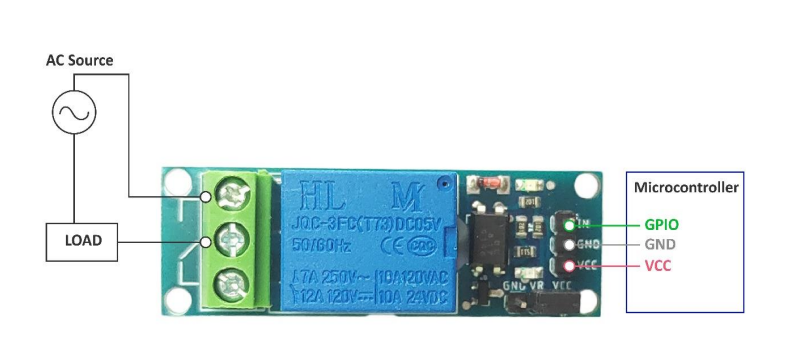
The mains wiring is screwed to the terminal block, and the microcontroller can be connected using jumper cables.
Single-Channel Relay Module Basic Trouble Shooting
If the relay does not switch on, i.e. no audible clicking sound is heard:
- The contacts might be stuck – Check by physically shaking the relay, if a light-clicking sound is not heard, then tap the relay hard, in most cases, this should ‘unstick’ both the contacts.
- If the contacts do click when the relay is shaken, then the transistor or the flyback diode might be damaged and must be replaced.
Applications: Relay Module 5V
- Mains switching
- High current switching
- Isolated power delivery
- Home automation


